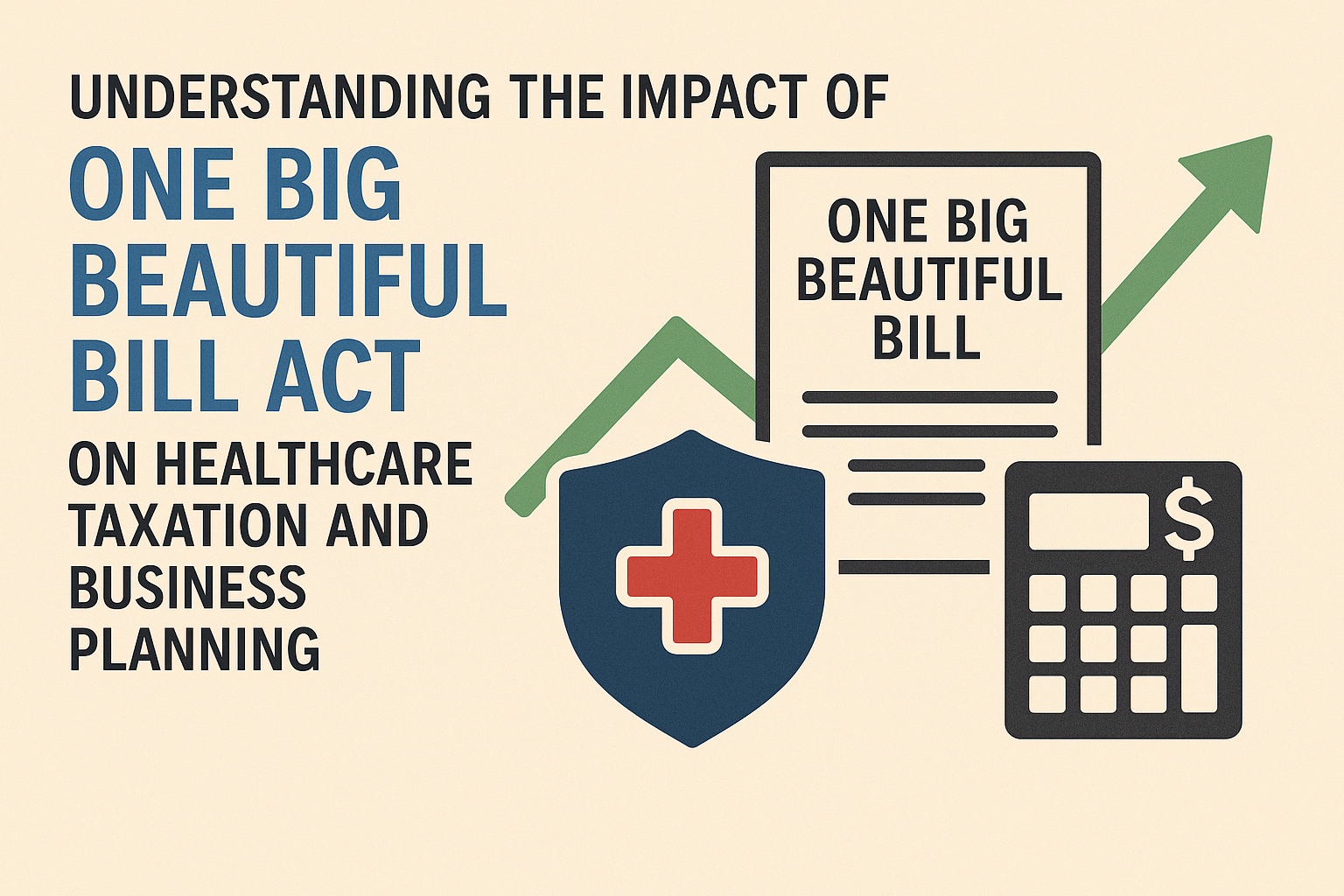Understanding the Impact of the One Big Beautiful Bill Act on Healthcare Taxation and Business Planning
Signed into law on July 4, 2025 (Public Law 119-21), the One Big Beautiful Bill Act (OBBBA) is a sweeping tax reform that reshapes healthcare...
3 min read
Baldwin CPAs 9/9/25 2:30 PM

Independent medical practices are facing one of the toughest financial landscapes in decades. Unlike large hospital systems, independent providers operate without the same economies of scale, making them more vulnerable to reimbursement cuts, labor shortages, and inflation-driven cost increases. In 2025, Medicare reimbursement cuts of nearly 2.8% have coincided with double-digit increases in operating costs, leaving many practices with shrinking margins. Inflationary pressures alone have pushed costs up by more than 11% year-over-year, with staffing, supplies, and technology representing the steepest expense categories.
While hospital systems often offset these pressures with broader service lines and market leverage, private practices must adopt sharper financial planning and more proactive accounting strategies to maintain stability.
Reimbursement rates continue to decline for independent practices. Medicare has seen a long-term downward trajectory, and commercial payers have failed to keep pace with inflation. These declining reimbursements directly compress margins for practices already facing tight financial conditions.
Labor remains the largest expense for practices. The cost of retaining skilled staff has surged, with wage demands rising in a competitive hiring market. Supplies, especially surgical and diagnostic tools, have experienced spikes of more than 80% in some specialties. Add to that the ongoing investments required for electronic health records (EHRs), cybersecurity, and telehealth systems, and expenses continue to climb.
On average, physicians now spend nearly two full workdays each week managing prior authorizations, while claim denial rates remain between 5–15%. This administrative friction not only burdens staff but also delays reimbursements and restricts cash flow.
Staff shortages are compounded by burnout, driving up overtime costs and turnover rates. The administrative load on practices, handling billing, compliance, and patient engagement, has never been heavier, reducing overall productivity.
Many practices are offsetting declining reimbursements by adding ancillary services. Offerings such as lab testing, imaging, nutritional counseling, and pain management not only improve patient care but also open new revenue streams.
Proactive denial management systems help reduce lost revenue. Investing in billing staff training, claim scrubber technology, and automated workflows can significantly lower denial rates and improve cash flow.
Annual review and renegotiation of payer and vendor contracts are essential. Outdated terms may leave practices undercompensated, while new market data and transparency rules provide leverage for improved rates.
Unlike static annual budgets, rolling forecasts provide 30–60 day financial outlooks, allowing practices to adjust quickly to staffing needs, volume shifts, and reimbursement changes.
Using benchmarking tools and group purchasing organizations (GPOs) helps practices identify cost outliers, streamline supply chains, and negotiate better vendor pricing.
Automated revenue cycle tools improve billing accuracy, reduce lag time, and offer patients real-time cost estimators. Practices that also provide flexible, zero-interest payment plans see faster collections and stronger patient trust.
Automation technologies, AI-assisted documentation, and telehealth integration allow practices to deliver high-quality care with fewer administrative burdens. Practices leveraging these tools report improved efficiency and better staff retention.
Supporting staff through flexible schedules, wellness initiatives, and professional development helps reduce costly turnover and sustain quality care.
With malpractice insurance premiums climbing, practices must review coverage regularly. Building disaster recovery and business continuity plans is now critical, especially in light of climate-related risks.
Joining physician-led networks or value-based care models allows practices to share resources, improve outcomes, and negotiate from a stronger position while maintaining independence.
Independent medical practices don’t have to face financial uncertainty alone. Baldwin CPAs partners with healthcare providers to deliver customized solutions in audit and assurance, tax planning, outsourced accounting, payroll, forensic support, and strategic advisory. Our Elevate accounting and advisory services leverage advanced reporting systems and real-time insights, helping practices stay agile and financially resilient in the face of margin pressures.
Connect with Baldwin CPAs today. Visit our Contact Form to get in touch and discover how our experienced professionals can help safeguard your margins and position your practice for long-term success.
Medicare reimbursements are down nearly 2.8% this year, continuing a long-term decline that has eroded nearly 30% of value over the past two decades.
Lab and imaging services typically deliver the strongest returns, followed by nutritional counseling, ECG, and pain management offerings.
Rolling forecasts are updated every 30–60 days, allowing practices to adjust staffing, expenses, and financial targets in real time. Annual budgets, by contrast, quickly become outdated in today’s volatile healthcare environment.
References
Forbes Business Council: Medicare Cuts in 2025: Navigating Private Practice Challenges
MGMA: Medical practice operating costs are still rising in 2025: here’s how to control them
Becker’s ASC: Practice challenges piling up for independent physicians
Medical Economics: 2025: the year of risks for medical practices
CT Insider: Opinion: Independent medical practices matter more than ever

Signed into law on July 4, 2025 (Public Law 119-21), the One Big Beautiful Bill Act (OBBBA) is a sweeping tax reform that reshapes healthcare...

Year-end processing poses a number of challenges to payroll administrators, business owners, and employers of all types. This article is aimed at...

Navigating the intricacies of a medical practice buy-in is as essential as it is complex. For practice owners, medical professionals, and healthcare...